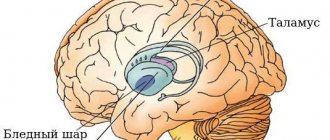What is dysarthria
For the first time, people started talking about a speech disorder, which was later called dysarthria, about a hundred years ago. Then the researchers identified a group of sound pronunciation disorders, calling them tongue-tied. A little later it was divided into functional and organic. At the same time, factors that could lead to dysarthric speech disorders were identified.
Despite the fact that dysarthria has been studied for so long, much remains unclear. Today there are two main approaches to the study of this speech disorder:
- neurological. This direction takes into account the clinical manifestations of dysarthria and the area of damage to the central nervous system. Speech disorders are considered in conjunction with other movement disorders that the patient has.
- neurophonetic. Phonemic analysis of dysarthric speech is carried out taking into account psycholinguistic techniques. More attention is paid to identifying and studying neurophonetic syndromes of dysarthria, and the clinical picture of pathology fades into the background.
That is why different researchers give different concepts of pathology. Some people believe that dysarthria should be called a pronunciation disorder in which the prosodic aspect of speech is disrupted. In this case, the definition of pathology is given based on its external manifestations. A number of researchers call dysarthria a coordination disorder of speech that occurs as a result of damage to the efferent system and motor analyzer. That is, unintelligible speech is only a symptom of another pathology.
Both of these definitions are correct and in some way complement each other. In simple terms, dysarthria can be called any disorder of sound pronunciation caused by organic damage to the brain. This can be either a complete lack of speech or a nasal, slurred tone of pronunciation.
The controversy extends beyond the definition of dysarthria itself. The classification of the types of this speech dysfunction also causes a lot of controversy.
Types of dysarthria according to O.V. Pravdina
Now there are several principles for dividing speech pathology such as dysarthria into types. In domestic speech therapy, the most common classification is based on the location of the affected part of the central nervous system.
The neurological approach is reflected in the classification proposed by O. V. Pravdina. Their description is presented in the table below:
| Name | CNS affected area | Speech Impairment |
| Cortical | Cortical structures of the brain. It is the cortex that is responsible for the functioning of the speech muscles and the human ability to speak. | Partial paralysis of the muscles of the articulatory apparatus, the sequence of movements when setting articulatory poses is disrupted. The pronunciation of consonants suffers. |
| Subcortical (extrapyramidal) | The striatum and pallidum are subcortical nuclei. These structures regulate muscle tone and also make it possible to give emotional expressiveness to speech. | The muscle tone of the speech apparatus is unstable, the muscles contract involuntarily. The person experiences difficulty trying to maintain articulatory posture. Sound disturbances are unstable. |
| Cerebellar | Conducting pathways and cerebellar nuclei. The respiratory, vocal and articulatory apparatus stop working synchronously. | A person’s speech sounds chanted; this happens involuntarily. Most sounds take on a nasal tone. Speech loses its emotional coloring. |
| Pseudobulbar | Systems responsible for conducting nerve impulses from the cerebral cortex to the nuclei of the medulla oblongata. | Bilateral paralysis of the muscles of the speech apparatus, increased muscle tone, they are practically motionless. Characteristic softening of sounds. Complex and differentiated sounds are affected selectively. |
| Bulbarnaya | Peripheral motor nerve nuclei (brain stem) | Paralysis of the muscles of the speech apparatus (right- or left-sided), the ability to involuntary and voluntary movements is lost. Speech takes on a nasal tone. |
Despite the fact that Pravdina’s classification is used by a large number of specialists, many researchers still consider it inaccurate. Most controversy arises regarding cortical dysarthria. This type of pathology is often regarded as a manifestation of motor aphasia, especially in adults.
Differential diagnosis of dysarthria from similar speech disorders.
Differential diagnosis of dysarthria from similar speech disorders
Distinctive features of erased forms of dysarthria from dyslalia.
A broad analysis of practice has shown that erased forms of pseudobulbar dysarthria are quite often confused with dyslalia. However, correcting sound pronunciation with dysarthria causes certain difficulties. G. Gutsman was the first to draw attention to this. He noted that these disorders are characterized by blurred, erased articulation. Having summarized the analysis of literary data, M.B. Eidinova and E.N. Pravdina-Vinarskaya explain disorders of the articulatory apparatus by its insufficient innervation and consider these cases as dysarthric. Despite the fact that in both dysarthria and complex dyslalia, hissing, whistling and sonorant groups of sounds are more likely to suffer, for dysarthria, correct isolated pronunciation of sounds is possible, but in spontaneous speech there is blurriness, palatalization, nasalization, and a violation of the prosodic side of speech. Children often say the end of a phrase while inhaling, the voice is hoarse, weak, quiet, and fading.
| Dislalia | Dysarthria |
| 1. In somatically weakened children. There is no organic matter. | 1. Associated with damage to the central nervous system (c.n.s.) |
| 2. There are no neurological symptoms. | 2. Asymmetry of the face, tongue, and soft palate is clearly expressed; the mouth at rest is slightly open due to paresis of the lips, the smoothness of the nasolabial folds is different. |
| 3. The motor sphere is without pathology, tendon reflexes are lively and uniform. | 3. General, fine and articulatory motor skills suffer. |
| 4. Only sound pronunciation suffers. The prognosis is favorable. | 4 Along with sound pronunciation, prosody suffers. The supplied sounds are difficult to automate. |
| 5. The voice is ringing, loud, richly modulated. | 5. The voice is dull, weak, compressed, fading, intermittent. |
| 6. Speech activity is increased | 6. Speech activity is reduced. |
| 7. He is critical of his defect. | 7. “He sees a speck in someone else’s eye, but he doesn’t notice a log in his own.” |
| 8. Autonomic disorders manifest themselves in sweating of the extremities and red dermographism of the skin. | 8. Autonomic disorders are grossly expressed: bluish, cold, wet extremities. |
| 9. Hygienic skills are developed quickly and maintained firmly. Outwardly, children are neat. | 9. Hygienic skills are difficult to develop due to motor impairments. Untidy. |
| 10. Restful sleep without night fears and dreams. | 10. Sleep disorders, night terrors, and dreams are observed. |
| 11. Diaphragmatic-speech breathing is normal. | 11. Breathing is shallow, clavicular, diaphragmatic-speech, unformed |
| 12. The child makes contact easily. His behavior is appropriate. | 12. Behavior is uneven, mood swings are frequent. |
| 13. Memory, attention, performance, thought processes, intelligence are normal, mental retardation (MDH) is rarely observed. | 13. Memory is reduced, short-term. Unstable attention, low performance. Intellect is reduced, often mental retardation (MDD), mental retardation to the degree of debility is possible. |
| 14. Children are active, mobile, engage willingly, and switch from one type of activity to another without much difficulty. | 14. They are slow or disinhibited, avoid activities, complain of headaches, have difficulty switching from one type of work to another. |
Thus, a child with dysarthria is given a “diagnosis on the face”, which is visible visually, without a special examination. First of all, this is an inexpressive facial expression, the face is amicable, the nasolabial folds are smooth, the mouth is often slightly open due to paresis of the orbicularis muscle. Asymmetry of the face, skull, mouth, and palpebral fissures is possible. Discoordination of general motor skills, manual and oral praxis is observed, resulting in blurred pronunciation, difficulties in drawing, writing, and in mastering cultural and hygienic skills: they eat for a long time, are unkempt, have difficulty fastening buttons, tying shoes. They are characterized by rapid fatigue, exhaustion of the nervous system, low performance, impaired attention and memory. The nature of speech disorders is closely dependent on the state of the neuromuscular apparatus of the organs of articulation. We examined 673 children. Analysis of the data obtained on the speech and psychoneurological state of children showed that their phonetic disorders are caused by paretic phenomena in certain muscle groups of the articulatory apparatus. As a result, in most children, interdental, lateral pronunciation of sibilants and sibilants predominates in combination with the guttural pronunciation of the r sound. Spastic tension of the middle back of the tongue makes all the child’s speech softened. When the vocal cords are spastic, a voicing defect is observed, and when they are paretic, a deafening defect is observed. Hissing sounds with dysarthric symptoms are formed in a simpler lower variant of pronunciation. Not only phonetic, but also respiratory and prosodic speech disturbances can be observed. The child speaks while inhaling.
There is a fairly frequent confusion between the boulevard form of dysarthria and the pseudobulbar form.
Differential diagnosis of similar speech pathologies of the boulevard form of dysarthria from pseudobulbar
| Criteria | Boulevard | Pseudobulbar |
| The nature of paresis, or paralysis of the speech muscles | Peripheral | Central |
| Nature of speech motor impairment | Voluntary and involuntary movements | Voluntary movements are predominantly affected |
| The nature of damage to articulatory motor skills | Diffuse | Selective, with impairment of fine differentiated articulatory movements |
| Specifics of sound pronunciation disorders | Vowels approach neutral, vowels and voiced consonants are deafened | The articulation of vowels is pushed back, along with deafening, voicing is observed |
| In neurological symptoms | The muscles of the organs of articulation are paretic | Even with pareticity, spasticity is observed in individual muscles |
The tabloid form of dysarthria is rare. Pseudobulbar is the most common (96% of children).
According to its manifestations, cortical dysarthria is sometimes confused with motor alalia, since the focus of localization is the cerebral cortex
Thus, alalik children are characterized by a ringing voice and fairly preserved sound pronunciation. Pronunciation disorders are dominated by inconsistent sound substitutions. Children with
Alalia distorts mainly sounds that are complex in articulation. Interchanges of sounds are relatively frequent. The facial expressions and speech of Alaliks are lively and expressive, and their speech activity is increased.
Children with cortical dysarthria resemble children with motor alalia, since the syllabic structure of complex words is primarily disrupted. The difference is that the child’s face is amicable, his voice is monotonous and fading; breathing is shallow, clavicular; there are no violations in the development of lexico-grammatical structure. The pronunciation is blurred, the same type of violations predominate, where distortions dominate (interdental, lateral, nasal sigmatism, etc.). Omissions of articulatory complex sounds are possible. The entire prosodic side of speech suffers (tempo, timbre, etc.).
Specialists experience the greatest difficulties in the differential diagnosis of dyslalia and dysarthria, especially erased forms.
Comparative characteristics of pronunciation in children with alalia and dysarthria
| Pronunciation of sounds in children with alalia | Pronunciation of sounds in children with dysarthria |
| 1. General characteristics of sound pronunciation | |
| 1) Sufficient preservation of the motor activity of the articulatory mechanism. 2) Predominantly phonemic disturbances are characteristic, most clearly manifested at the sign level of the activity of the articulatory mechanism. 3) Many sounds that are subject to violations (distortions, substitutions, omissions) also have correct pronunciation. 4) Various types of violations of the pronunciation of sounds, its distortions, substitutions, omissions. 5) Pronunciation disorders are dominated by sound substitutions | 1) Severe violation of the articulatory mechanism. 2) Phonetic disorders are predominantly characteristic. 3) Isolated sounds that are subject to violations (distortions, substitutions, omissions) also have correct pronunciation. 4) Same type of sound pronunciation violations (only its distortion, replacement or omission). 5) Pronunciation disorders are dominated by sound distortions |
| 2. Sound distortion | |
| 1) Distortion of a small number of sounds. 2) Distortion of sounds that are predominantly difficult to articulate. 3) For some distorted sounds, the coexistence of distorted and correct articulation is characteristic | 1} Distortion of a large number of sounds. 2) Distortion of both complex and simple sounds in articulation. 3) All distorted sounds are characterized by constant distortion |
| 3. Sound replacements | |
| 1) Replacement of articulatory complex sounds. 2) Inconsistent sound replacements. 3) Various sound replacements. 4) Interchanges of sounds are relatively frequent | 1) Replacement of predominantly articulatory complex sounds. 2) Constant sound changes. 3) Monotonous sound replacements. 4) Interchanges of sounds are relatively rare |
| 4. Missing sounds | |
| 1) Non-permanent omissions. 2) Omissions of both articulatory complex and simple sounds | 1) Permanent passes. 2) Omissions of predominantly articulatory complex sounds |
Other types of classifications
The French neurologist Tardieu proposed classifying dysarthria according to how well others can understand the dysarthric person’s speech. As a result, he identified four degrees of severity of the violation:
- Only a specialist can identify violations.
- Speech problems are noticeable to others, but speech is understandable.
- Only people from his immediate environment can understand a child.
- There is no speech at all or it is incomprehensible even to the child’s loved ones.
This classification is very clear and convenient. It is often used in their work not only by speech therapists, but also by educators, psychologists, and teachers.
In speech therapy work, the division of dysarthria into types is also often used based on the syndromic approach. In this case, the speech therapist should work together with a neurologist. The doctor determines the leading symptom, and the teacher identifies similar defects in the functioning of the speech apparatus.
Using this approach made it possible to identify the following types of dysarthria:
- spastic-paretic – with the leading syndrome being spastic paralysis;
- spastic-rigid – spastic paralysis and rigidity syndromes;
- hyperkinetic – hyperkinesis;
- ataxic – ataxia;
- spastic-atactic – spastic paralysis and ataxia;
- spastic-hyperkinetic – spastic paralysis and hyperkinesis;
- spastic-atacticohyperkinetic – spastic paralysis, ataxia, hyperkinesis;
- ataxic-hyperkinetic – ataxia and hyperkinesis.
Dysarthria is also divided into types based on the severity of the disorder. In mild forms, speech disorders are minor, often noticeable only when tired. This form is also called erased.
Mild dysarthria has much in common with dyslalia. The only difference is that dysarthric sufferers experience neurological microsymptoms.
The average degree is direct dysarthria (severe), characterized by obvious speech impairments, it becomes slurred, blurred, but generally remains understandable to others.
In severe dysarthria, a person’s speech cannot be understood. If the pronunciation side of speech is impossible, then this form is called anarthria.
Bulbar and pseudobulbar dysarthria: differences
Bulbar and pseudobulbar dysarthria have many common symptoms. However, the two forms of the disease also have a fundamental difference: with bulbar dysarthria, peripheral neurons are affected, and with pseudobulbar dysarthria, central ones are affected.
The main symptoms of pseudobulbar dysarthria include:
- Reduced motor activity of the child.
- Significant memory deterioration; the baby cannot concentrate his attention on one thing.
- Problems with articulation and pronunciation of speech sounds. However, muscle paresis does not develop in this case (unlike the bulbar form of the disease).
- The muscles near the mouth and chin contract involuntarily from time to time.
Other forms of dysarthria
In addition to bulbar and pseudobulbar dysarthria, doctors identify several other forms of pathology.
Subcortical. The patient's vocal apparatus and facial muscles contract involuntarily. Speech becomes slower and more drawn out, and with emotional overload it may disappear altogether. If left untreated, the child may gradually lose hearing.
Cerebellar. Very rare. The patient's speech becomes chanted; he often involuntarily shouts out individual words or phrases.
Reasons for the development of dysarthria
Dysarthria develops as a result of organic damage to the central nervous system. Pathology can occur at different periods of a person’s life. But modern research has shown that in approximately 80% of cases it is congenital. That is, brain damage occurs during the intrauterine period of life.
The main reasons for the development of congenital pathology include:
- Viral and infectious diseases of the mother.
- Kidney failure, as well as pathologies of the heart and vascular system in women.
- Injuries during pregnancy, both physical and psychological.
- Radioactive exposure of a pregnant woman.
- Conflict of Rh factor and mismatch of blood groups between mother and fetus.
- Severe intoxication, including alcohol, nicotine and drugs.
The above factors pose the greatest danger to the fetus in the first three months of pregnancy.
Pathology can also occur at the time of birth. Previously, birth injuries were considered the main factor in the development of dysarthria. However, modern research has made it possible to classify problematic childbirth as secondary factors that aggravate existing pathologies in the fetus. The primary cause can only be considered the unsuccessful use of obstetric aids by medical staff. Brain injuries resulting from medical errors can lead to the development of cerebral palsy and other pathologies.
Impairment of the motor function of the speech apparatus can occur in a child born completely healthy. Dysarthria can occur as a result of a neuroinfection, poisoning (severe intoxication), brain injury, or oncological pathologies of the central nervous system. In adults, dysarthria can be caused by a stroke.
Correction of dysarthria is carried out in two directions at once. First of all, it is necessary to restore the functioning of the central nervous system, as far as the degree of its damage allows. This is done by a neuropathologist. At the same time, a defectologist or speech therapist carries out speech therapy work, which is aimed at normalizing the functioning of the articulatory apparatus.
Comparative characteristics of dysarthria and dyslalia
Differential diagnosis of erased dysarthria and dyslalia is carried out after identifying defects of the palate or other organs of articulation. In the neurological status of such children there are no severe lesions of the central nervous system.
With dyslalia, children have no mental deviations from the age norm. usually doesn't happen. Sometimes there are temporary delays in mental development. In some cases, dyslalia occurs against the background of mental retardation. With dysarthria, mental development delays of an organic type, sometimes oligophrenia, are more common. The emotional-volitional sphere and character of children with dyslalia do not suffer, while patients suffering from dysarthria in most cases exhibit difficult behavior with unstable mood, accompanied by crying, and often have affective outbursts. Knowledge of the clinical and pedagogical features of the course of dyslalia and dysarthria enables doctors and speech therapists at the Yusupov Hospital to better determine the prognosis of these speech disorders, prescribe appropriate therapy and determine the nature of speech therapy classes.
How to recognize dysarthria
Despite the fact that dysarthria is a very complex speech disorder, it can still be corrected, especially if we are talking about an erased form of the disorder.
Dysarthria can be recognized from the first days of a child’s life, and parents should be wary of the following points:
- When breastfeeding, weak nipple latching and sucking reflex may indicate weakness of the muscles of the articulatory apparatus. Milk leaks from the mouth and even the nose;
- The child, later than his peers, begins to hold his head up (5-7 months), try to sit up and crawl (8-11 months), and walk (after 18 months);
- the child develops speech late, sounds are monotonous, articulation is unexpressed;
- increased salivation. The child cannot swallow his own saliva due to flaccid muscles of the tongue, cheeks and lips. The mouth is always open;
- problems with drinking from a cup, chewing food;
- lack of substantive activity. The baby does not show interest in toys, his actions with them are inadequate or inappropriate for his age;
- The baby does not react to loved ones and does not show joy. There is no smiling, walking, or motor activity of the arms and legs.
At a later age, dysarthria may be indicated by disturbances in breathing and speech rhythm.
A child, when talking, pronounces words with different volumes and intonations or in syllables. With dysarthria, a nasal sound appears. Due to the increased tone of the articulatory muscles, the child may get tired during the conversation. In addition to speech disorders, dysarthria also causes motor disorders. The child may grasp objects too strongly or weakly. The grasp reflex may be absent altogether. Spatial and visual and spatial perception are also affected. The child cannot correctly determine the shape and size of an object, for example, when playing with various sorters or pyramids. Difficulties arise when performing physical exercises.
Fine motor skills are especially affected in dysarthric children. It has long been proven that there is a relationship between the ability to perform precise coordinated movements of the hands, the development of speech and mental perception. Insufficiency of the motor part of the brain leads to the fact that it is very difficult for a child to perform pincer grasp with fingers, or it is not performed at all. In erased forms of dysarthric disorder, the development of fine motor skills helps to quickly “launch” speech.
Children who have a history of pathologies associated with the prenatal and birth periods are required to be observed by a pediatric neurologist. The doctor should pay attention to existing problems. If pronounced deviations in the baby’s development are not observed, then he is removed from the register.
Further monitoring of the child's condition is carried out by his parents. When the first alarming symptoms appear, it is better to immediately contact a specialist.








